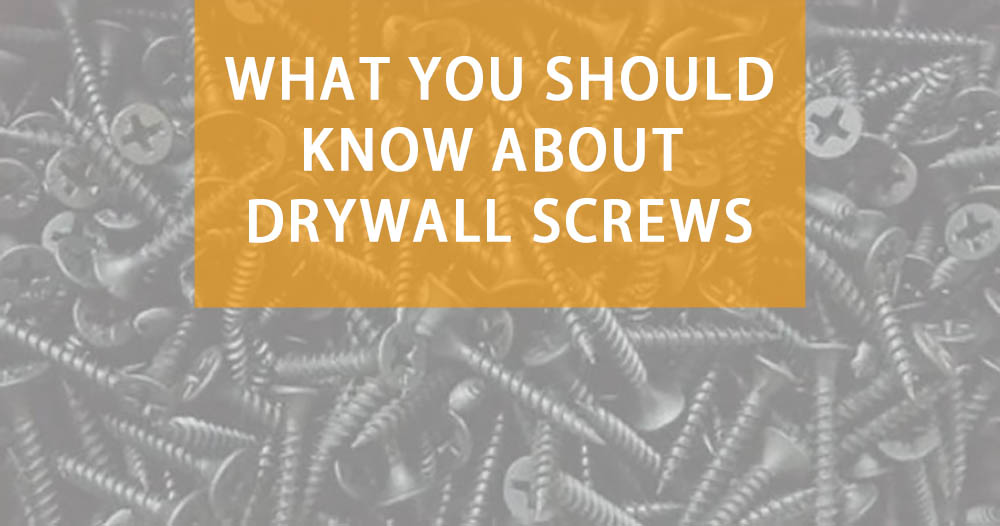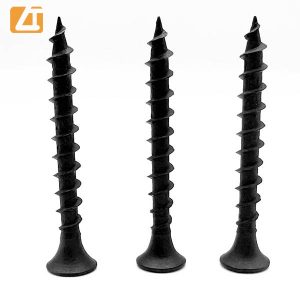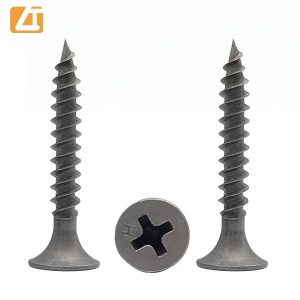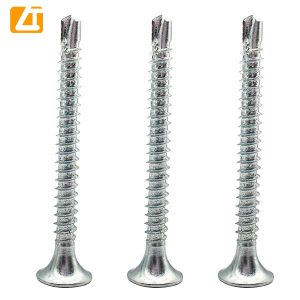What you should know about drywall screws

Drywall screws have become the standard fastener for securing full or partial sheets of drywall to wall studs or ceiling joists. Drywall screws are the backbone of your renovation, building, or home improvement projects. You will know drywall screws’ lengths and gauges, thread types, heads, points, and composition after read this blog.
Drywall Screw Models
Drywall screws can be divided into self drilling point drywall screw and self tapping point ( sharp point) drywall screw according to the shape of the tail. Among them, the sharp point drywall screws are divided into coarse thread drywall screw and fine thread drywall screw according to the thread distance.
Coarse Thread Drywall Screw
 |
The coarse thread drywall screw also name W-type drywall screw or wood screw. It’s thread distance is larger than fine thread drywall screw. It can attaches gypsum board and wood to wood. They are used for wood framed buildings, where their coarse threading helps them to securely grip the wood. Extra sharp, penetrates quickly. Sharper threads make driving easier and provide better holding power. The screws can be used for various applications besides installing drywall, including cabinets, plasterboards, and hanging pictures.
Fine Thread Drywall Screw
 |
The fine thread drywall screw also name S-type drywall screw or gypsum board screw. It’s thread distance is smaller than fine thread drywall screw. S-type drywall screws are designed for use with steel framing members. They have a sharp, bugle head that can easily penetrate the steel framing, as well as fine threads that are designed to pass through the steel. They can drill light metal without a pre-hole.
They are ideal for securing drywall sheets to narrow metal frames or shapes with minimal thread penetration. They can also attach wood panels to frames most suited for drywall use. Fine-threaded drywall screws minimize the risk of material cracking and tearing, a common problem associated with rough-threaded.
Self Drilling Drywall Screw
 |
Self-drilling screws feature a drill-shaped point that allows them to cut through material, eliminating the need to drill a pilot hole. They are generally used with more pliable materials, such as soft steel and drywall. The screw points are numbered from one to five — the higher the number, the thicker the material it’s able to penetrate before drilling a pilot hole is required.
Wondering how to drill drywall screws? You can, of course, use a pilot hole if you prefer, as long as you ensure the hole is smaller than the screw — which allows the thread to catch. If you choose to go without a pilot, as you can with self-drilling drywall screws, make sure you have a stable electric screwdriver or drill. Start fastening at the lowest possible speed to ensure the drywall screw fastener goes in straight. Also, be sure to tighten the screw — but not too much. You don’t want it to be so tight you can’t remove it, if necessary.
The Surface of The Drywall Screw
All drywall screw models can have a customized surface treatment at Tianjin Lituo, it can be grey/black phosphated, yellow/blue/white zinc plated, nickel plated and so on.
Advantage and Features of The Drywall Screws
- All drywall screw models no need a pre-hole, it will save time to fasten.
- Bugle head: Bugle head refers to the cone-like shape of the screw head. This shape helps the screw stay in place, without tearing all the way through the outer paper layer.
- Driver of head: #2 phillips cross drive, can use #2 phillips driver
- Surface treatment: The phosphate or zinc plated surface treatment has excellent anti-corrosion and rust prevention performance.

